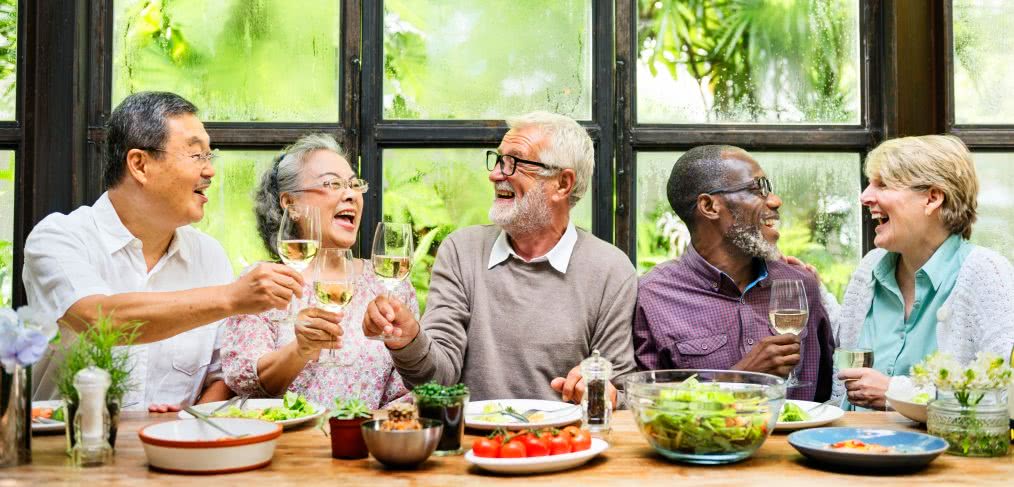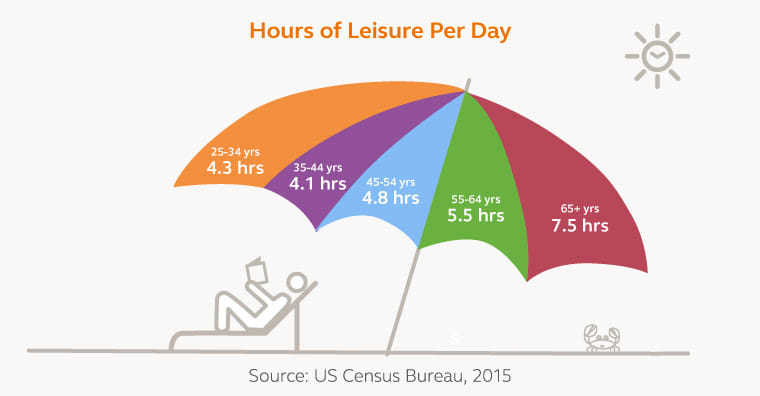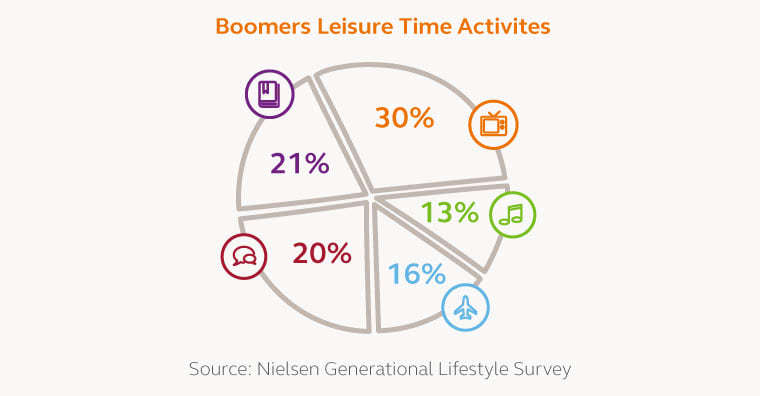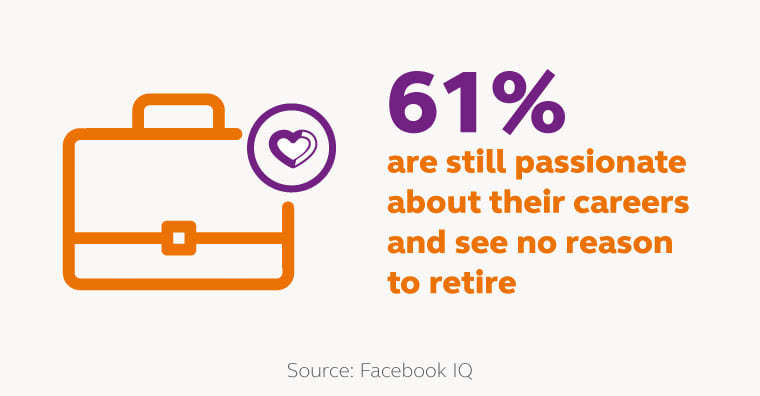
DATÜM: Active Aging
Move over, millennials: the baby boomer generation has more leisure time and disposable income than you, and they’re busy redefining retirement and making waves in the market. Designing for more age-inclusive environments requires a fresh look at what it means to age actively, and the opportunities are endless.

BREAKING STEREOTYPES
Millennials may be the most researched generation in history, but current trends and spending power indicate that it would behoove us to pay a little more attention to their parents. And as the typical suburban flight patterns shift into reverse and retirees and empty nesters show an increasing preference for city centers, the urban landscape needs to adjust to better accommodate the lifestyle choices of this influential demographic. Consider the data:
- Between 2015 and 2030, the number of people over the age of 60 worldwide is set to increase by 56% [source: Stylus]
- 60% of those aged 50+ also want to travel to places they’ve never visited, either to learn about new cultures or try things they have never done before [source: Ketchum, October 2016]
- 75% of 45- to 70-year-olds agree that modern technology have made their lives better, compared to 77% of Millennials [source: Facebook IQ]
- 2/3 of Americans now say they expect to work for pay at least part-time in retirement [source: Forbes, 2016]

NEW ‘OLD’ INSPIRATION
Empowering the older generation means putting them front and center as brands seek to reach and resonate with this core market. Residential buildings, workplaces and consumer products are all getting revamped to ensure inclusivity for a more mature audience.
Eco-Retirement Villages
Fueled by a sense of empowerment and shared social values, a newly retired group of citizens in Lyon, France created the Chamarel retirement cooperative to provide sustainable, affordable living space for members of their age group. Members invest into a combined cooperative fund and pay monthly rent and, if and when they choose to leave, their investment is returned in full. Decisions are made via a consensus-based “one person, one vote” model. Not only that, but the residents have taken an active interest in the environment: their four-story dwelling is insulated with straw and houses 16 units of varying size.
Boundless Youth
Brands are actively courting baby boomers and reinforcing the notion that age isn’t anything but a number: during the Rio Olympics, Nike ran the ad “Unlimited Youth,” featuring 86-year-old triathlete Sister Madonna Buder—also known as the “Iron Nun.” Since she began running at the age of 47, she has participated in more than 45 triathlons and was the oldest woman to ever complete an Ironman race at the age of 75.
Boomer Business
Building the case for an age-neutral society with equal parts design thinking and entrepreneurship is London-based social enterprise The Age of No Retirement. Their mission is to break down the boundaries between generations in order to envision an age-inclusive future with products, services, campaigns and environments across sectors and industries that cater to all. Many boomers still plan to work well past traditional retirement age, so how can business better tap into their expertise and also offer flexibility?
Design for Enhanced Living
A current exhibition at the Design Museum in London called New Old explores the potential for designers to create products that enhance our experiences in later life, ranging from apparel to driverless cars and scooters with built-in storage.

AGE INCLUSIVE DESIGN
Forget what you thought retirement looked like—today’s baby boomers are breaking the mold and showing that there’s more to life after kids and career than moving to Florida and drinking martinis at the golf club, and that is sure to have a ripple effect on Gen X, Y and Z.
- Inspiring Future Generations
- 66% of 14 to 34-year-olds in the U.S. say they are not afraid of getting older, and we can’t help but think that it’s in part because they are learning by example. Age-inclusive design will help to ensure that entering a new age bracket doesn’t mean giving up freedom and independence. It’s time for brands to more actively celebrate these lifestyle changes and look beyond designing for millennials.
- Wellness For Everyone
- A Facebook IQ survey found that every eight in 10 people age 45+ reported that they eat well and exercise regularly, while one in five already track or plan to track their fitness through apps or devices. Wellness is far from a new concept, but it’s now seen as more than just a gym; it’s something that should be integrated into every aspect of the built environment. Interest in living a healthy life isn’t limited to a generation, and people are increasingly aware of and prefer environments that support wellness goals.
- Citywide Inclusivity
- Pew Research data indicates that in 1980, when boomers were 18 to 33 years old, 68% lived in metropolitan areas; today, that number is 83%. Similarly, a survey by Merrill Lynch found that only 40% of retirees and pre-retirees expect that they will move to a different part of the country, indicating that most baby boomers are happy to stay where they are. City planners and developers would do well to acknowledge the influence of this demographic as it pertains to living arrangements, transportation, employment, community engagement and wellness. This is particularly important for the healthcare industry as boomers are projected to spend more on health care than their parents did.

This article is right on track. Baby boomers want to still enjoy their careers, accumulating a source of wisdom along their career paths, and wanting to share the knowledge, but also take some time to enjoy life. I see them enjoying life to the fullest with the perfect balance of career, leisure, and good health.